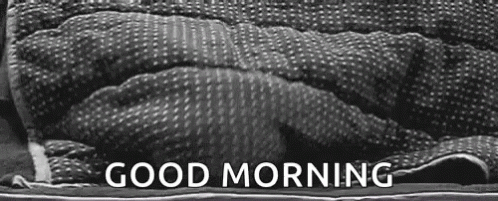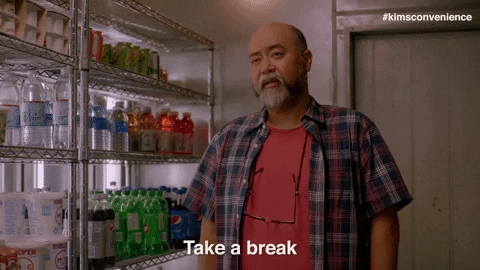productivity tips · Dec 2, 2020
7 Productivity Rituals to Work Better Under Time Pressure

Between time sensitive tasks, daily curveballs, and the day-to-day pressure of KPIs and deadlines, it can be hard to stay productive in a busy, tough environment.
In many jobs it’s difficult to avoid stress. All you can really do is find ways of managing, or channelling the stress into being more productive and efficient.
But how do you do that?
Everyone wants to be more productive, but the day-to-day goings on can quickly throw all that out the window.
The simplest solution is to establish productivity rituals.
Productive rituals are habits you build which help you get through your day. There are many different types of productivity rituals, from what you do in the morning to how you manage your day, to your sleep schedule, and future planning.
There is no magic bullet.
No one-trick pony that will allow you to ‘hack’ your way to success.
Rituals are habits you have to build over time. And once you do that, you’ll be more productive. You will also be able to work better in time pressure situations.

7 productivity rituals that will help you work better under time pressure
What you do in the morning will impact how well you perform during the day. How you approach each moment will determine how well your day, week, month, etc. will go.
As everyone is different, we thought we would provide seven productivity rituals instead of just one. This way, you can find the one which works best for you and apply that to your day.
Of course, there’s nothing to say you can’t incorporate more than one of these into your daily routine.
Read more about 15 productivity tips from Bill Gates, Elon Musk, Warren Buffet and Others.
1. Get grounded
What you do in the morning will set the tone for the rest of the day. Not having a good morning can leave you feeling disorganized and overwhelmed for the day to come. This is why it is so important to have a morning routine that will help you get grounded for the rest of the day.
If you don’t have a morning ritual already, or you’re looking to refine or improve your current one, here are some steps you can do.
Write down what you do each morning, and then add what you’d like to do each morning.
Figure out roughly how much time you would need to get through everything on your list.
If necessary, you may need to change your wake-up time to accommodate this new list.
Give yourself at least 2 to 3 days to get used to your list before making any changes.
Adapt your morning routine until you’re comfortable with it, and it becomes a habit.
A morning ritual doesn’t need to be complex. It can be something as simple as getting up a little earlier to meditate for five to ten minutes, and then going for a jog or walk.
The idea is to start small, and slowly grow it as you become comfortable. Starting your day off like this can help you start your day with more physical and mental energy.
2. Prioritize your strategy/schedule
Not everything on your list is important. Not every task or errand is urgent. To work better with time pressure, you need to assess what’s on your plate for the day. Figure out what absolutely has to get done by the end of business, and what can wait—without consequence—for a quieter day.
By establishing a priority schedule and strategy list, you can better gain a holistic perspective on what needs to be done.
This list will also help you say no more.
Why is it important to say no more? Simply because saying yes to everything will not only slow you down, it’s also one of the biggest reasons people feel harassed and overworked.
With a prioritized list, you will be able to know if an incoming task is going to help, or hinder, you in meeting your deadlines. Saying no to unimportant tasks is crucial in staying on top of what’s necessary for your day.
Read more how to use GTD method to better prioritize to-do lists.
3. Stay in the moment
Tomorrow is tomorrow’s problem. Fretting and stressing about it will not help you work any faster. In fact, worrying about tomorrow is a good way of slowing yourself down.
The only way you can control tomorrow is by controlling right now. Don’t rush, don’t take shortcuts, and don’t lose sight of what’s important right now.
If you do find yourself stressing out a little bit, the best productivity ritual is this:
Pull back, slow down, take a breath, and stop. Just for a moment.
Then make a checklist, sketch out two to three things that you can do right now to help achieve your deadline. Not what you need to do tomorrow, not next week, but what you can do today.
This is not easy. But when you are self-aware enough, and present enough, you can turn this into a productivity ritual. And it’s a ritual that works to great effect when it comes to working successfully with time pressure.
4. Expect the occasional curveball
Unexpected things happen. All the time. Working in the now means being just malleable enough to go with what comes at you.
This ties into the above productivity ritual. By being able to stop and assess what it’s in front of you right now, it can allow you to assess each task or errand on how it fits into the overall strategy or goal you’re working on.
The way this can become a productivity ritual is by developing the capacity for handling, managing and controlling the pressure that comes your way.
By being mentally prepared for the occasional curveball, you’re less likely to procrastinate, get overwhelmed, and/or panic. Allowing you work better with time pressure in a variety of daily situations.
5. Avoid procrastinating
Procrastination is a bad habit. And it’s one usually resulting from a desire to avoid something. The problem being, of course, that you will eventually have to do the thing you’re avoiding. Or maybe it’s not the immediate task, but the next one you’re avoiding.
A lot of the time, accepting the inevitability of your situation is enough to interrupt the habit of procrastination. But like a lot of habits, it takes time to break.
The best way to break this habit, and leave it broken is to replace it with another habit.
For instance, breaking tasks down into smaller manageable pieces often makes work look more manageable and even easier to complete. Because you’re not looking at some large project, but rather the individual steps.
This is why creating a prioritized strategy/task list is such an effective productivity ritual. Everything is reduced to a series of simple steps that add up to the completion of an overarching goal.

6. Schedule breaks
The importance of regular breaks should not be underestimated. Very few people are able to concentrate for hours and hours on end.
There have been studies which show that taking short breaks each hour will not only help you focus better, but you will also be more productive.
Which is why scheduling breaks in your day is an important productivity ritual. Stepping away from your work for a few moments is the ideal way for you to relax and decompress. This will allow you to better concentrate and refocus on what you are working on right now.
Building a ritual of regular, short, scheduled breaks can work wonders to help improve your productivity when it matters.
7. Be prepared for tomorrow
Once you have finished for the day, and you no longer need to live in the now, it’s time to focus on tomorrow’s now. For the last part of your day, instead of mentally clocking off, now’s a good time to create that list for tomorrow.
Write out your goals for the following day, and include scheduled breaks in your to-do list. When creating your to-do list think about:
What tasks have to be completed by this time tomorrow?
What are your highest priorities?
Are there any issues that might occur? Or possible setbacks?
Writing out this list will help you mentally prepare for tomorrow. And it may help you to go home and relax knowing you’ve mapped out the next day, and you have an idea of what to expect.
The advantage of this is being relaxed when you go home can help you sleep better. Which will help you be more energetic the next day.
Work better under time pressure with the right productivity ritual for you
Working better with time pressure is a case of building the right productivity ritual or rituals for you.
Whether it’s the morning ritual to get your mentally and physically ready for the day. Or, it’s turning ‘be present’ into a habit that allows you to deal with the occasional curveball, and ensure you stay on top of your work.
The right productivity ritual will help you not only work better with time pressure, but it will help you be more productive in general.


